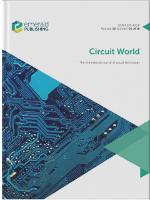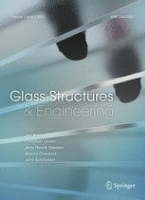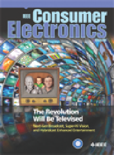
Light & Engineering
Scope & Guideline
Navigating the Bright Path of Engineering Excellence
Introduction
Aims and Scopes
- Lighting Engineering and Design:
A core focus on the principles and practices of lighting design, including architectural, urban, and landscape lighting, with an emphasis on enhancing visual comfort and aesthetic appeal. - Photometry and Measurement Techniques:
Research related to the measurement of light and its effects, including methodologies for assessing illuminance, luminance, and spectral characteristics in various environments. - Sustainable Lighting Solutions:
Exploration of energy-efficient and environmentally friendly lighting technologies, including solar energy applications, LED systems, and smart lighting solutions. - Human-Centric Lighting:
Studies focusing on the impact of lighting on human health, well-being, and performance, emphasizing the psychological and physiological effects of different lighting conditions. - Innovative Lighting Technologies:
Investigation into new technologies and materials in lighting, such as advanced LED systems, smart lighting controls, and photonic devices. - Lighting in Agriculture and Horticulture:
Research exploring the role of artificial lighting in plant growth, photobiology, and agricultural applications, including the use of LEDs for optimizing crop production. - Historical and Cultural Aspects of Lighting:
Analysis of the evolution of lighting technologies and their cultural significance, particularly in architectural and historical contexts.
Trending and Emerging
- Smart and Adaptive Lighting Systems:
There is a growing trend towards the development of smart lighting systems that utilize IoT technologies, allowing for adaptive lighting solutions tailored to user needs and environmental conditions. - Daylighting and Solar Integration:
Research emphasizing the integration of natural daylighting into building designs and the use of solar energy for lighting solutions is gaining momentum, driven by sustainability goals. - Human Factors in Lighting Design:
An increasing focus on human-centric lighting design, examining how different lighting conditions affect mood, productivity, and health, is emerging as a key area of interest. - Advanced Photonic Technologies:
Emerging research into photonic devices and their applications in lighting, including the use of holography and nanomaterials, is becoming more prominent as technology advances. - Biological and Environmental Impacts of Lighting:
Studies investigating the biological effects of light, including its influence on ecosystems and agricultural productivity, are increasingly relevant as the importance of sustainable practices grows. - Artificial Intelligence in Lighting Control:
The application of AI and machine learning techniques in optimizing lighting control systems is a rapidly expanding area, reflecting the broader trend of digital transformation in engineering.
Declining or Waning
- Traditional Incandescent and Fluorescent Lighting:
Research on conventional lighting technologies such as incandescent and fluorescent lamps is decreasing as the industry rapidly shifts towards more energy-efficient LED solutions. - Basic Photometry without Advanced Techniques:
Publications focusing on basic photometric measurements without the use of advanced technology or computational methods are becoming less frequent, as there is a growing emphasis on more sophisticated approaches. - Historical Analysis of Lighting Technologies:
While historical perspectives remain important, there is a noticeable decline in new research focusing solely on the historical development of lighting technologies, as contemporary applications take precedence. - General Lighting Standards without Specific Applications:
Research that discusses broad lighting standards without applying them to specific contexts or technological advancements is seeing reduced emphasis in favor of more targeted studies. - Non-Environmental Considerations in Lighting Design:
Studies that do not integrate environmental sustainability considerations into lighting design are becoming less relevant as the industry prioritizes eco-friendly practices.
Similar Journals

Tecciencia
Fostering innovation through open-access research and collaboration.Tecciencia is an esteemed academic journal dedicated to the advancement of knowledge in the fields of technology and applied sciences. Published by UNIV ECCI in Colombia, this journal aims to foster innovative research and applications that address contemporary challenges in various technological domains. With its ISSN 1909-3667 and E-ISSN 2422-3670, Tecciencia serves as a vital platform for scholars, professionals, and students to publish original research, reviews, and case studies that contribute to the ever-evolving landscape of technology. The journal promotes an open-access model, ensuring that research findings are widely disseminated and accessible to practitioners and researchers alike. Its commitment to high academic standards is reflected in its objective to provide a peer-reviewed forum that upholds the integrity and quality of all submissions. As a noteworthy entry in the field, Tecciencia welcomes contributions that push the boundaries of technology and applied sciences, making it an essential resource for those looking to stay at the forefront of innovation.

Propagation of Ornamental Plants
Bridging Aesthetics and Science in HorticulturePropagation of Ornamental Plants is a distinguished journal published by SEJANI PUBL that focuses on the field of ornamental horticulture, an area critical to both commercial and aesthetic applications in the environment. With an ISSN of 1311-9109, this journal serves as a platform for scholarly articles and research spanning from 2005 to 2021, and resuming in 2023. While its current Category Quartiles place it within the Q4 rankings for Forestry and Plant Science, this journal remains committed to providing valuable insights and research findings related to plant propagation techniques, environmental sustainability, and ornamental plant breeding. Despite being an underrepresented publication within its field, its efforts contribute to the body of knowledge necessary for advancing both academic research and practical applications. For researchers, professionals, and students alike, Propagation of Ornamental Plants stands as an essential resource for advancing the field and fostering innovation in ornamental horticulture.

Advances in Civil and Architectural Engineering
Leading the Charge in Engineering InnovationAdvances in Civil and Architectural Engineering is a cutting-edge scholarly journal dedicated to the dissemination of pioneering research in the realm of civil engineering and architecture. Published by the esteemed Josip Juraj Strossmayer University of Osijek, Faculty of Civil Engineering and Architecture, this journal operates under an Open Access model since 2022, allowing for unrestricted access to its rich repository of articles. The journal aims to bridge the gap between academia and industry by providing a platform for innovative studies, technical advancements, and best practices that contribute to the evolution of sustainable construction and architectural design. With its focus on interdisciplinary approaches and contemporary challenges in the field, Advances in Civil and Architectural Engineering serves as an invaluable resource for researchers, professionals, and students seeking to enhance their understanding and impact in this vital area of engineering. The journal's ISSN is 2975-3848, and it is committed to fostering the advancement of knowledge and collaboration within the global engineering community.

CIRCUIT WORLD
Transforming Challenges into SolutionsCIRCUIT WORLD, published by Emerald Group Publishing Ltd, is a pivotal academic journal in the fields of Electrical and Electronic Engineering and Industrial and Manufacturing Engineering. Established in 1974, this journal has provided a vital platform for researchers and professionals to disseminate their findings and advancements over nearly five decades. With a notable Q3 ranking in both categorization areas as of 2023, CIRCUIT WORLD emphasizes the importance of innovation and practical applications in engineering. The journal facilitates the exchange of ideas, featuring case studies, reviews, and cutting-edge research that address contemporary challenges in the industry. Although not an open-access journal, it remains dedicated to contributing significantly to the academic community, making it an essential resource for students and professionals committed to advancing their knowledge and expertise in these dynamic fields. With a focus on providing insights into current trends and future directions, CIRCUIT WORLD stands out as a crucial catalyst for scholarly collaboration and innovation.

Glass Structures & Engineering
Shaping Tomorrow’s Infrastructure with Transparent Solutions.Glass Structures & Engineering, published by SPRINGER INT PUBL AG, stands as a significant platform in the field of architectural and structural engineering, with a strong focus on advancements and innovative applications of glass in construction. With its ISSN 2363-5142 and E-ISSN 2363-5150, this prestigious journal holds a commendable position, evidenced by its Q1 classification in Architecture and Q2 ranking in both Building and Construction and Civil and Structural Engineering as of 2023. Since its inception in 2016, Glass Structures & Engineering has aimed to disseminate cutting-edge research findings, theoretical approaches, and case studies that explore the multifaceted uses of glass in modern infrastructure. Researchers, professionals, and students alike will find this journal an invaluable resource for the latest trends and methodologies in the evolving landscape of architectural design and structural integrity. Although it does not offer Open Access options, the journal remains an indispensable source for quality scholarly content in Switzerland and beyond.

Vakuum in Forschung und Praxis
Elevating Standards in Condensed Matter StudiesVakuum in Forschung und Praxis is a pioneering journal dedicated to advancing the fields of condensed matter physics and surfaces, coatings, and films. Published by WILEY-V C H VERLAG GMBH in Germany, this journal has been a vital resource for researchers and professionals since its inception in 1989. With its ISSN 0947-076X and E-ISSN 1522-2454, it provides an annual compilation of innovative research and practical applications in vacuum technology, making significant contributions to both academic and industrial sectors. Although it currently holds a Q4 ranking in both its primary fields as per the 2023 category quartiles, the journal remains an important platform for emerging studies and insights that aim to enhance our understanding of vacuum processes and their applications. With rigorous peer review and a focus on quality, Vakuum in Forschung und Praxis continues to attract a diverse readership, from seasoned researchers to eager students, fostering an environment of collaboration and knowledge exchange.

Architecture Civil Engineering Environment
Bridging Architecture, Engineering, and Environment for a Greener FutureArchitecture Civil Engineering Environment, published by Silesian University of Technology, is an esteemed open-access journal dedicated to advancing research and scholarship in the fields of architecture, civil engineering, and environmental science. With its ISSN 1899-0142 and E-ISSN 2720-6947, the journal facilitates the dissemination of innovative practices and methodologies to an international audience. Since transitioning to open access in 2016, it has fostered a collaborative environment that empowers researchers and professionals to share their work freely, thus enhancing the visibility and impact of contemporary studies. The journal emphasizes interdisciplinary research, aiming to bridge gaps between architectural design, civil infrastructure development, and environmental sustainability. By publishing high-quality peer-reviewed articles, Architecture Civil Engineering Environment plays a crucial role in shaping the future of sustainable practices within these intertwined disciplines, making it an essential resource for scholars, practitioners, and students alike.

Journal of Electronics & Information Technology
Advancing the Frontiers of Electronics and Information TechnologyJournal of Electronics & Information Technology, published by the prestigious Chinese Academy of Sciences, Institute of Electronics, stands as a vital resource in the field of Electrical and Electronic Engineering. With an ISSN of 1009-5896, this journal has been dedicated to the dissemination of advanced research and innovative applications since its inception in 2001. It holds a competitive position within its category, ranked Q3 in the 2023 Scopus database, reflecting its contribution to the scientific community. The journal addresses a wide array of topics related to electronics and information technology, making it indispensable for researchers, professionals, and students aiming to stay at the forefront of technological advancements. Although it operates under a traditional model of access, its cumulative output remains pivotal for knowledge sharing and innovation in the rapidly evolving landscape of electronic engineering. With its commitment to excellence, the Journal of Electronics & Information Technology aims to foster a thriving academic environment and promote impactful research within the discipline.

International Journal of Engineering and Technology Innovation
Fostering Innovation Across Engineering FrontiersThe International Journal of Engineering and Technology Innovation, published by the Taiwan Association of Engineering & Technology Innovation, serves as a pivotal platform for recent advancements in the fields of engineering and technology innovation, fostering scholarly communication and collaboration across disciplines. Since its inception in 2011, the journal has maintained an Open Access policy, ensuring that research findings are readily available to a global audience without restrictions, promoting knowledge sharing and accelerating innovation. With an ISSN of 2223-5329 and an E-ISSN of 2226-809X, this esteemed publication encompasses vital research from categories within Civil and Structural Engineering, Electrical and Electronic Engineering, Mechanical Engineering, and Mechanics of Materials, each recognized in the Q3 quartile as of 2023. As researchers, professionals, and students navigate the rapidly evolving landscape of technology, the International Journal of Engineering and Technology Innovation serves not only as a repository of high-quality research but also as a catalyst for progressive ideas that reshape the future of engineering practices worldwide.

IEEE Consumer Electronics Magazine
Discovering Breakthroughs in Electronics and ComputingIEEE Consumer Electronics Magazine, published by the IEEE INSTITUTE OF ELECTRICAL AND ELECTRONICS ENGINEERS INC, is a premier journal dedicated to disseminating cutting-edge research and insights in the fields of consumer electronics, engineering, and computer science. With an ISSN of 2162-2248 and an E-ISSN of 2162-2256, this quarterly publication serves as an essential resource for practitioners, researchers, and academics alike, highlighting innovative advancements and applications. As a testament to its scholarly impact, the journal ranks in the Q2 quartile across multiple categories, including Computer Science Applications, Electrical and Electronic Engineering, Hardware and Architecture, and Human-Computer Interaction, reflecting its crucial role in shaping the landscape of consumer technology. Although not an open access journal, it offers a multitude of access options for its readers and has successfully navigated the evolving technology sector since its establishment in 2012. For those keen to further their understanding of consumer electronics, this magazine is not just a publication, but a hub for knowledge and innovative thinking.